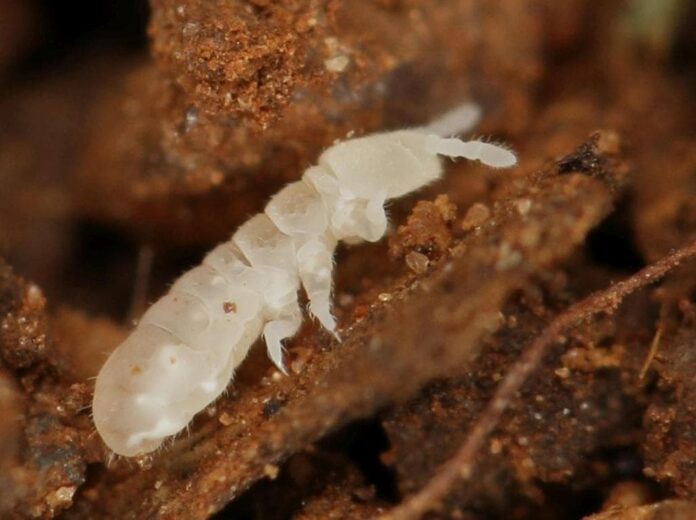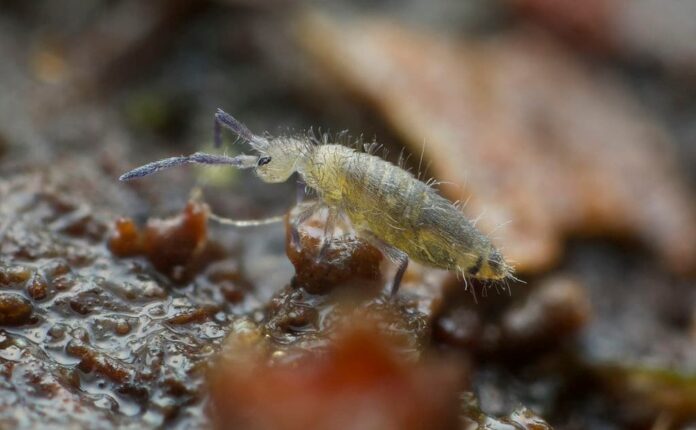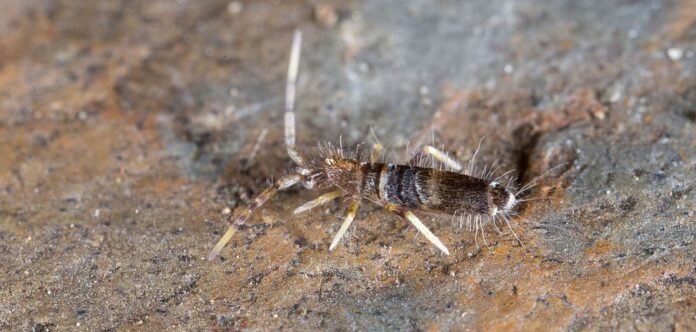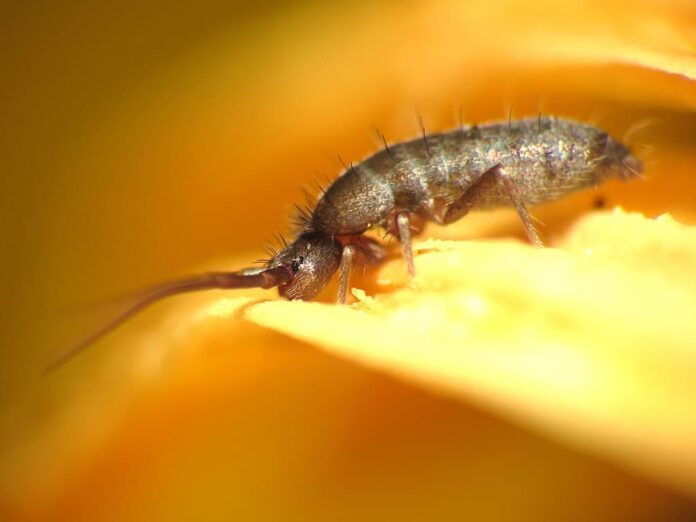The springtail is nothing to gardeners as many of them are common in the gardens. This little hexapod is a tiny creature that lives beneath the soil, and they have a unique appearance. So we are just going to explore a bit about little bugs that many people do not know of. In case you come across one, at least you know that they are harmless.
1Appearance

A springtail is a tiny creature that has six or fewer abdominal segments, and some may have more than six segments. This six-legged hexapod has a tubular appendage with reversible and sticky vesicles that project from the first abdominal segment. Springtails do not have wings so they cannot fly but they can jump at a great height. Many springtail species have an abdominal tail-like appendage located on the 4th abdominal segment that is folded beneath the body. It releases this appendage to fling itself into the air for rapid evasion and travel. Most springtails are dark colored, usually black, brown, or gray but there are also brightly colored or white species too.
2Behavior

Normally, springtails can breed very quickly so they can be nuisances to homeowners. At the same time, they also breed all year long if the condition is favorable for them. The interesting thing about springtails is that they have the ability to reduce up to 30% of their body size. This ability is important to their survival as it allows them to suppress their energy requirements and metabolic rates in warmer conditions. Simply put, they are doing well when the weather is cold or the environments are moist.
While insects like mosquitos or ticks disappear in cold weather, springtails are sometimes found hopping around in freshly fallen snow. This is why their other nickname is “snow flea” though they are not fleas at all. The name is due to their ability to jump just like how fleas do. More than that, they can also utilize protein in their bodies to survive harsh winter temperatures as well.
3Feeding & Habitats

Springtails are divided into 3 main species: carnivorous species, detritivorous species, and herbivorous species. The carnivorous species feed on small invertebrates such as nematodes, rotifers, and collembolan species. Meanwhile, the detritivorous and herbivorous species consume biological material present in leaf litter and soil. These two species not only support decomposition but also increase the availability of nutrients for various species of fungi and microbes. Springtails commonly feed on many other things such as animal remains, bacteria, colloidal materials, fungal hyphae, plant materials, pollen, and spores.
These hexapods are literally everywhere as long as there is soil and favorable habitats for them to live in. Some of those are areas with ant and termite nests, decaying logs, fallen wood, grass tufts, and moss cushions. And when the environment outdoors becomes dry, they will start searching for moisture. So it is also common for them to invade homes or seek shelter in areas with moisture near swimming pools. They enter homes through open doors, vent pipes, and window screens, and they also live in potted plants as well.
4Relationship With Humans
Some springtail species are actually pests of some agricultural crops because they cause damage, and they are considered pests in Australia too. That is because they feed on tubers and damage them when chewing on the leaves of seedlings or roots. Along with the bad things, they also do some good deeds because of their ability to carry good spores. They carry mycorrhizal fungi and mycorrhiza helper bacteria spores on their tegument that are beneficial to agriculture. At the same time, they also control plant fungal diseases because of their consumption of pathogenic fungi spores and mycelia.
When at home, they can also be a nuisance during the invasion when a large number fall and drown in the pool. That is because they can coat the pool surface and cleanup can be quite annoying. Though they do not bite or cause any harm to people or pets, they are still a nuisance to see. So if you see large numbers of springtails, it simply means there is a high moisture problem.
Related Post: Things You Don’t Know About The Potato Bugs




